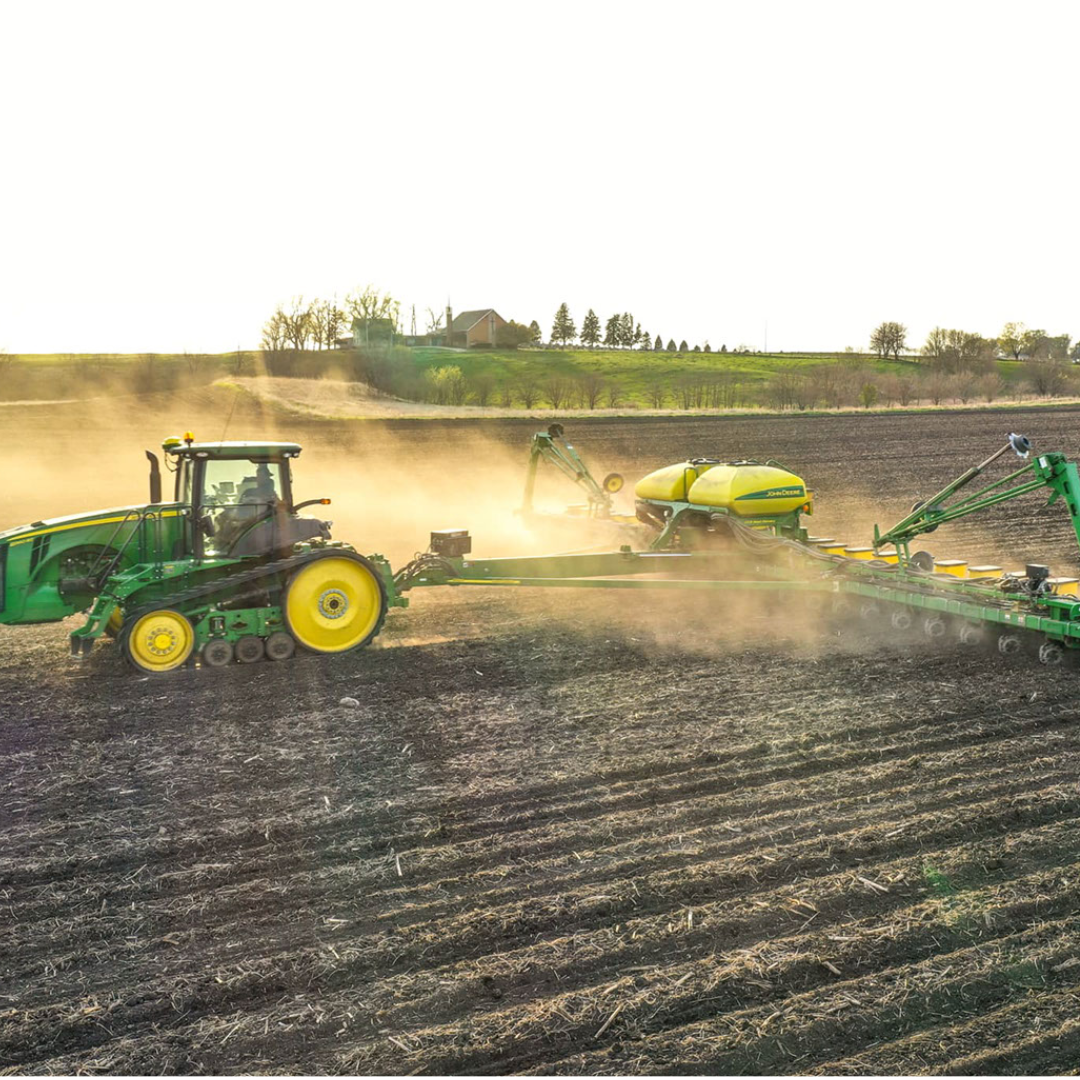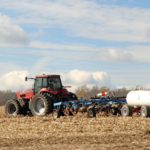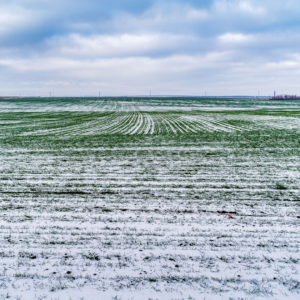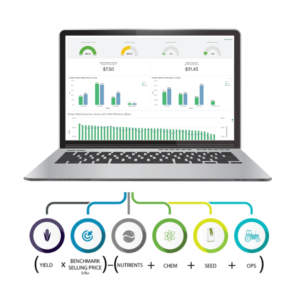
Today we will be discussing variable rate seeding pays to get growers better results and return in their operation. We are joined by Matt Bowers, Strategic Account Manger for Premier Crop Systems in Ohio. Matt has been with PCS for the past year and previously worked in the seeding industry.
RENEE HANSEN: All right, welcome to the Premier Podcast, Matt. Thanks for joining us today. Today, we’re going to talk about different seed options and how Premier Crop helps with different seed selection. So can you even just start by talking about what Premier Crop can do to help a grower with their seed selection?
MATT BOWERS: Yeah, so when you’re working with Premier Crop, we have the ability to work with your own data on your own farm and look at hybrids across your own operation. But we also have the opportunity to look at group data and look at hybrids in your area and how they’re performing across different soil types or across different regions. But we can also look at other operations across our group and in our anonymous group data, where we look at what hybrids are doing well in your region or in your area. And we can start to dial in the direction of where you want to go with your seed selections.
RENEE HANSEN: Why is it so important that they can be able to see group data and what other people in their area are planting and the data from that? What makes that so important from Premier Crop’s standpoint?
MATT BOWERS: I think it just opens a little bit of a bigger spectrum from what we’re able to see on your own operation and starting to look at trends and trend lines of how different hybrids or different varieties are doing in the area. I do feel, as an ex seed salesman, that it is important to verify those things out on your own operation because it has to work on your farm. But the data set that we have and the amount of growers and the information that we have in our system that can anonymously be looked at across hybrids and varieties is, I think, a big benefit to the Premier Crop system because there’s so much data on so many acres and so many attributes that go into that. We can really start dialing in a little bit better, rather than some of the research that comes out at a higher level from the seed companies themselves.
RENEE HANSEN: Yeah, you bet because they’re looking at a much broader scale, while we can dial it down to their local area. So let’s dive a little bit deeper. So, once they find their hybrid selection, and they know what field they’re going to put it on, let’s dive into talking about variable-rate seeding. How does it work, and why is that beneficial to a grower?
MATT BOWERS: Yeah, so I think one of the questions that I hear a lot, especially towards the area that I cover in the Eastern Corn Belt, is: does VR seeding work? And my answer to that is it does work, but I think there are some key variables that go into helping that variable seed population work for each operation. So the key is how variable-rate seeding success is being evaluated, in my mind. So it can’t be just evaluated by seed savings or an overall yield increase across that field because, then, it’s a tougher measure of success. But we need to build a comprehensive plan, and we can do that in Premier Crop. That includes tying together our VR fertility with our VR seeding. So that VR fertility can be P, K, nitrogen, and tying that with our seeding program. Then, we tie it with the economics so that what we’re looking at in our measure of success is actually on the economics and not on rates or savings. It’s actually looking at: ‘Okay, what is our profitability across these areas when we do our VR seeding?’
RENEE HANSEN: Yeah, absolutely. And I feel like it really goes into our yield efficiency score too because growers can then see and compare anonymously by benchmarking against other growers’ fields in the area to see: where do they fall? Where do they match up when it comes to profitability? Because I’m going down that road of profitability, how do you know that VR seeding will pay in the long run?
MATT BOWERS: I mentioned it before. It has to be a comprehensive plan. I think that’s the key to VR seeding, to paying in the long run. So, as growers, we all know that our field yields differently across that field. So, as we watch the yield monitor, it shows us every year that there’s variability across that field. And we need to tap into that data and build out our production zones — our management zones — as a base layer for the rest of the programs, then, that we add on top of that. And we do that at Premier Crop where that is our base start, and that’s where we get started. And from there, we can start with variable-rate phosphorus and potassium applications, to apply the fertilizer to those production zones based on soil test values. The growers build goals and actual yield removal values from that field. And we then tie our variable-rate seeding into those same zones so that we’re feeding the plants that we’re putting out there. Then, lastly, we can add variable-rate nitrogen rates to properly feed those plant populations and those yield goals that we have for those different production zones. And it’s this synergistic effect of all of those operations working together that will increase the ROI across the entire field as we improve the economic efficiencies at that sub-field level.
RENEE HANSEN: Yeah, I think you made a really great point of just talking about so many different layers. It’s not just about VR seeding. You have to make sure you’re feeding the plants in the areas that you’re putting more in and maybe taking away some of the inputs in the areas that you’re not putting as much seed in. I think layering all those layers, like you said, is really beneficial to the whole program of what we’re trying to do. It’s not about saving money. It’s more about finding the most profit in the field. And let’s just talk a little bit more about population. How do you select the right hybrid population for VR seeding? How do you get it to be the right rate?
MATT BOWERS: So that’s a great question. We have a good starting point. Most seed companies have population recommendations for different field productivity levels with each hybrid. And rather than applying these recommendations across an entire field based on a field’s average productivity level, let’s apply these recommendations from the seed companies to those production zones that I was speaking of earlier as a hybrid jumping-off point. So we’ll have the ability to look at what yield range those areas have. We can dial that in from their recommendations to start. And from there, we have our learning blocks and, then, our enhanced learning block tools within Premier Crop Systems to test out multiple rates in each of these zones to improve upon the recommendations. So, being able to put those things to the test in your own field, to turn your own field into a research farm, I think, is a very key point that Premier Crop Systems brings along with it. And I know there’s hesitancy out there to put the trust in hybrid availability, as well, from the seed supplier, from a year-to-year perspective. And I would ask, though, with that challenge of a question: how often do the main hybrids of your operation change over time? For most seed companies, when a hybrid performs well and in a large geographical area, that hybrid will stay in the lineup until it can be beat. So, if it’s not getting beat, and it’s still performing, then, typically, it’ll stay in the lineup. So your most successful hybrids, typically, are available for four-plus years from any given company. As well, if you’re bringing in a new hybrid into the operation and wanting to try it out, we make a return on investment in the economic decisions on the hybrid or its variable-rate seeding quicker with our tools in Premier Crop, to turn your farm into your own research location. And we can dial those things in faster than even looking at local plot areas that the seed company might have out in your geography or in your location.
RENEE HANSEN: Yeah, and you mentioned a local research trial in your own field. I just want to be clear that the equipment does it all. It’s just a prescription in the equipment when we’re talking about populations, rather than making it really complicated and having to — whether it’s multiple-hybrid or whatever we are — the equipment, the technology, does it itself. And it can be really — and can sound really — complex. So how do we simplify it?
MATT BOWERS: Variable-rate seeding can look intimidating or complex, and I think the beauty of Premier Crop Systems is Premier Crop ties together all of the variable-rate applications into one system based on the same production zones. That’s a key jumping-off point there, and you don’t have to jump from one system to another system and to yet a different system to look for results. Like you were saying, with our learning blocks or our enhanced learning blocks, it’s built into the prescriptions. And we put it right into the machine, into the equipment, and the equipment does the work. It’s based on the equipment’s capabilities, whether that’s the planter or the harvester. It’s based on their capabilities and what they’re able to do. So it’s not trying to fit a square into a round hole. We start with the round hole, and we find the round peg that’ll fit into that. And that works right into our enhanced learning blocks and how they’re set up and put into the monitors. And those results, at the end of the day, are still based on profitability and ROI. They’re not based on yield or seed savings alone. And to me, that’s the important thing. We want to be successful in profitability and ROI because that’s going to keep us on the farm. That’s going to keep us farming. That’s going to keep us expanding or being better at producing on the ground that we currently have because maybe our ground is shrinking. I’m just outside of Columbus. And I know ground here disappears every day, and we have to be more profitable on the ground that we have.
RENEE HANSEN: Sure. Going back to these research trials that we offer, what information comes out of that, and then how do you make a decision from it?
MATT BOWERS: So that’s a great question. I think, when we look at the results that are coming out, it is based on that field’s production zone and that production area. So we’re getting multiple rates across that area and dialing it in so that we know: did we shoot too high on this seed population with this hybrid? Did we shoot too low? Where’s our win rate on that?
RENEE HANSEN: Does Premier Crop show the data of how a grower can select the best hybrid for their field?
MATT BOWERS: So the short answer is yes. The long answer is that Premier Crop’s analytics capabilities allow a grower to evaluate hybrids across their operation by each hybrid’s yield efficiency score, which is each hybrid’s dollar-per-acre return back to land and management costs. So those hybrid results can be taken out even further if desired, and then analyze those hybrids’ yield efficiency scores across anonymous grower data from that grower’s local area. So, having the opportunity to not only do research on your own farm, but also step out, look a little bit further in that geographical area, into our anonymous data group, and start to look at it overall: ROI of certain hybrids and how they’re performing. Now, we always want to take that back to our own farm. So, if we see a hybrid that piques our interest, we want to try out and look at our own operation the next year, we want to bring those hybrids in and make sure that they’re still proving out in our own data on our own farm. That way, we’re controlling the results because it is our operation, and not everything’s going to always translate. That’s the beauty of Premier Crop Systems. It’s that we analyze at a group level, but we really key in on when we look at what we’re doing within our own operation and how those things are being successful and proven out on our own ground.
RENEE HANSEN: If a grower was not working with anybody in some kind of the precision space when it came to seed, whether it be hybrid selection or variable-rate seeding, what would you say to them? What is something that would really benefit them?
MATT BOWERS: For somebody that’s not into this space yet but has the desire to explore and take a look at it, I think working with the Premier Crop system allows them to take those steps into it. It doesn’t have to be everything at once. It doesn’t have to be all or nothing, but we have the opportunity to meet the grower where they’re at — and their operation where it’s at — and start taking the steps now that will lead down to the opportunities to apply variable-rate seeding or going back to variable-rate nutrients. It’s taking those necessary steps to get started, evaluate it, see how it’s going, see how it improves their ROI and then prove out maybe the next equipment purchase, maybe the next upgrade that they’re looking at. Maybe it’s the next decision, then, to put in the next layer and say: ‘I’m seeing the benefits of what I’ve started, from where I was to the one change that I made, and now I see that benefit. I want the next, and I want to see how much more I can improve my ground and my operation and my ROI.’
RENEE HANSEN: All right, great. Thanks, Matt, for joining us today, helping us talk about seed and hybrid selections within Premier Crop Systems, but also talking about variable-rate seeding and how we can make that a little bit more easy and not as complex for the grower in the future.
MATT BOWERS: Yeah, thanks for having me.
RENEE HANSEN: Thanks for listening to the Premier Podcast, where everything agronomic is economic. Please subscribe, rate and review this podcast so we can continue to provide the best precision ag and analytic results for you. And to learn more about Premier Crop, visit our blog at premiercrop.com.
___________________________________________________________________________________________
- For more helpful tips and insight on all things data and agriculture, visit our blog at http://info.premiercrop.com/blog
- Curious about precision ag? Download our 5 Steps to Getting Started Guide: http://info.premiercrop.com/5-steps-guide
- Ready to cut through the bull? Download our No Bull Guide to Precision Ag: http://info.premiercrop.com/field-profitability-guide
- Podcast provided by Premier Crop Systems. Learn more about us at https://www.premiercrop.com





